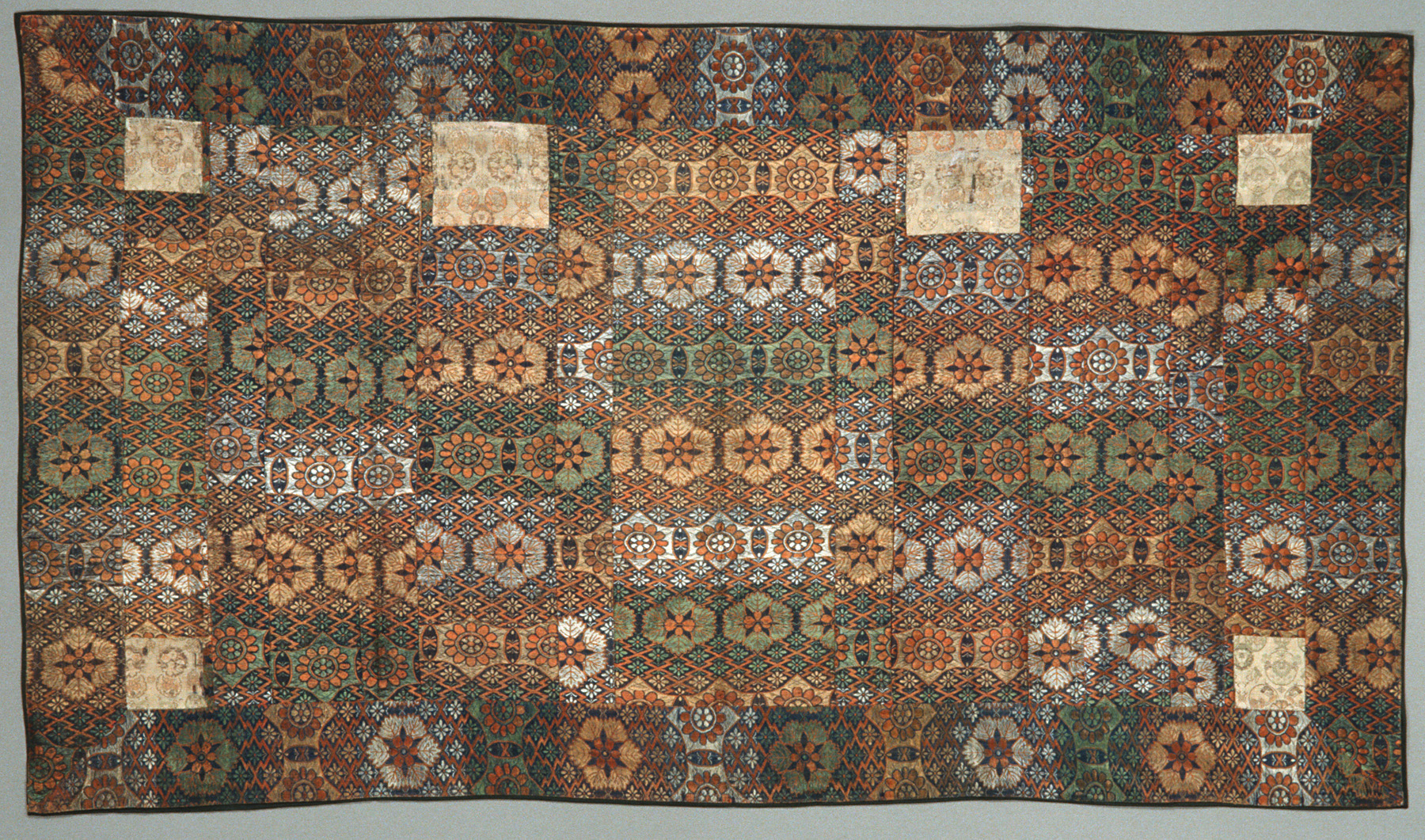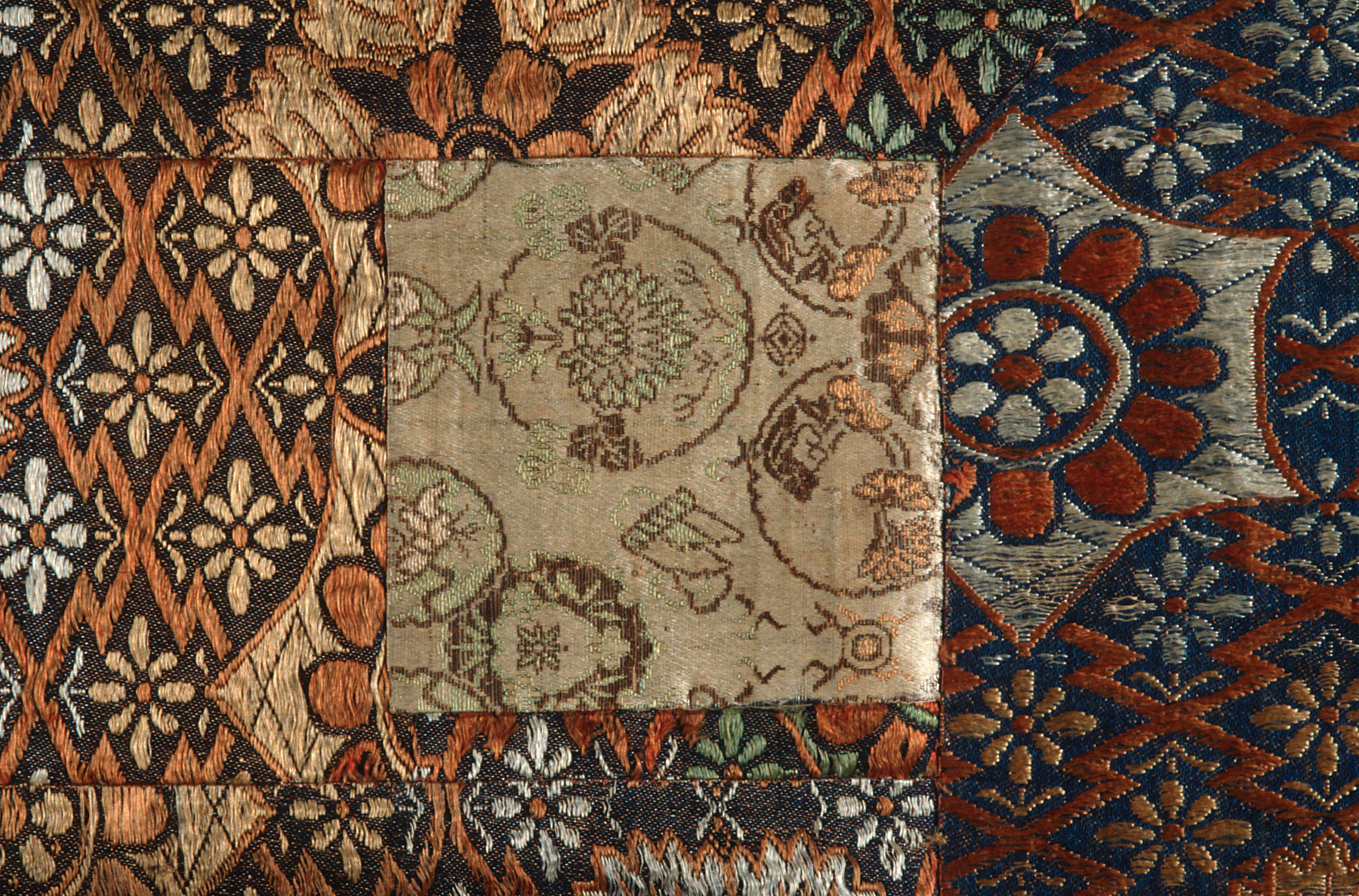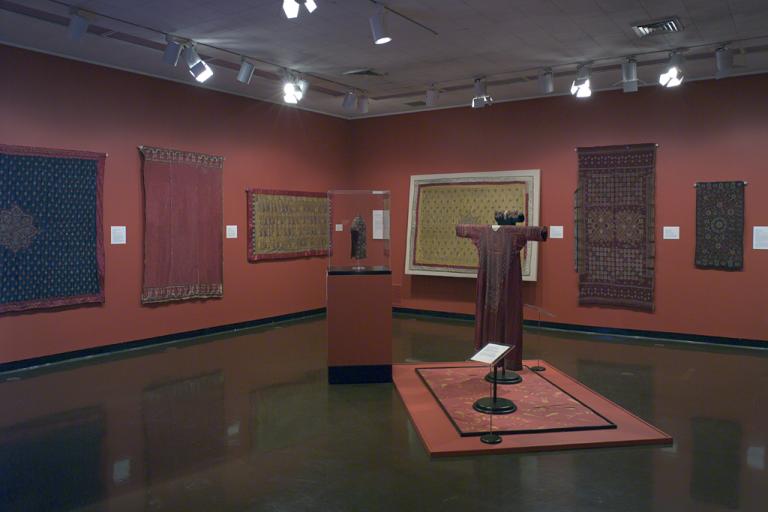Exhibition Label:
“Flowers, Dragons and Pine Trees: Asian Textiles in the Spencer Museum of Art,” Nov-2005, Mary Dusenbury
In this kesa, or Buddhist priest’s robe, the corner patches and those flanking the center back are older than the main textile and were probably woven in China in the sixteenth century. The main fabric dates from the second half of the seventeenth century, about the time the kesa was constructed. The Chinese patches are worn and were probably recycled from an older kesa.
The number of panels in the kesa exhibited the status of the owner. This one has seven panels, indicating a priest of comparatively high status. The panels are defined by latticework constructed of the same fabric. There has been no attempt to align the patterns as there is in many later kesa. Here the play of regular, symmetrically disposed geometric shapes is enlivened by a deliberate breaking of the symmetry where the fabric was cut and pieced.
This kesa probably left Japan in the Meiji period, a time when government persecution of the Buddhist establishment and resultant poverty forced many temples to sell their treasures. At one point the garment was in the collection of the Traphagen School of Design in New York, founded by fashion designer Ethel Traphagen (1882-1963) in the early 1920s.
Archive Label 2003:
Mary Dusenbury, former graduate student intern, serendipitously found this kesa in a small Asian art gallery in Soho during a visit to New York and recommended its purchase to the museum. She was quite taken with the beauty of the garment and the extra layering of meaning from the added patches of older material.
The kesa is the oldest, the most universal, and the most important Buddhist garment. Its form can be traced back more than two millennia to ancient India. Kesa are constructed of patched fabrics placed in an uneven number of columns of three, five, nine, or more. The number of columns has now come to indicate the relative status of the wearer. The use of scraps of cloth patched together symbolizes the Buddhist vow of poverty, a reminder that poverty and frugality are necessary companions in the search for truth.
Typically, kesa or portions of them were passed down from master to disciple signifying the transmission of religious authority. Although many kesa only minimally represent the idea of piecing old scraps of cloth together or are made from a single material, the kesa seen here is made from actual patches of cloth sewn together. Certain patches come from an older robe, most likely from the robe of an earlier master.


